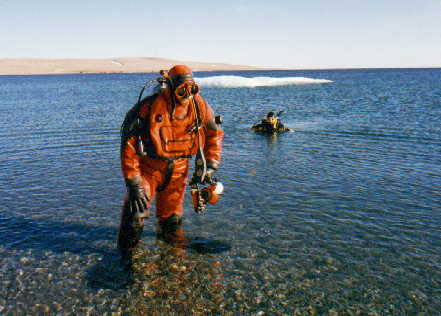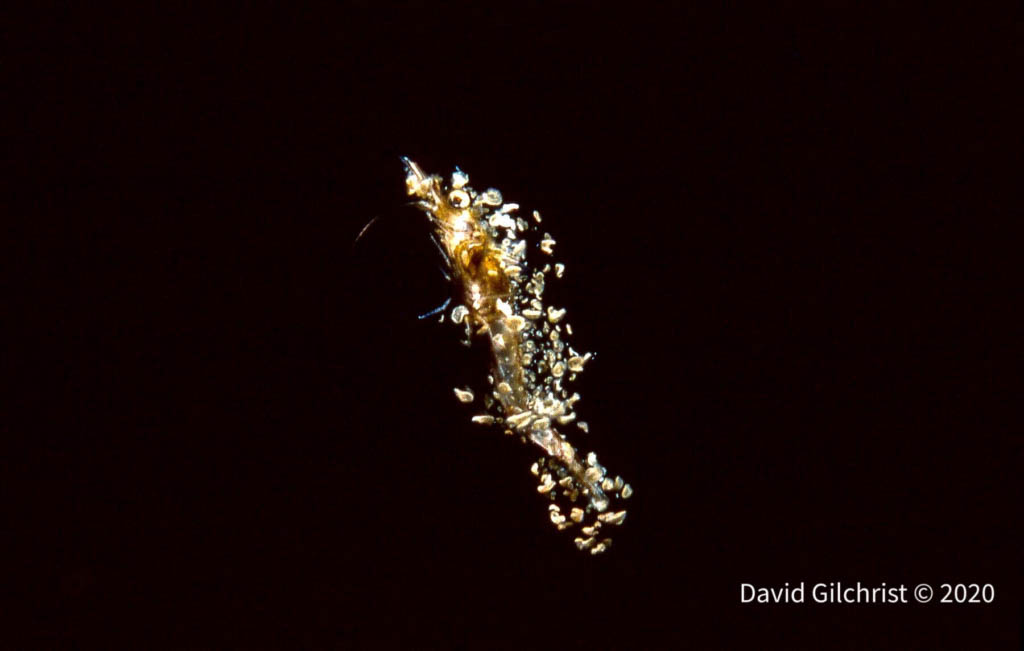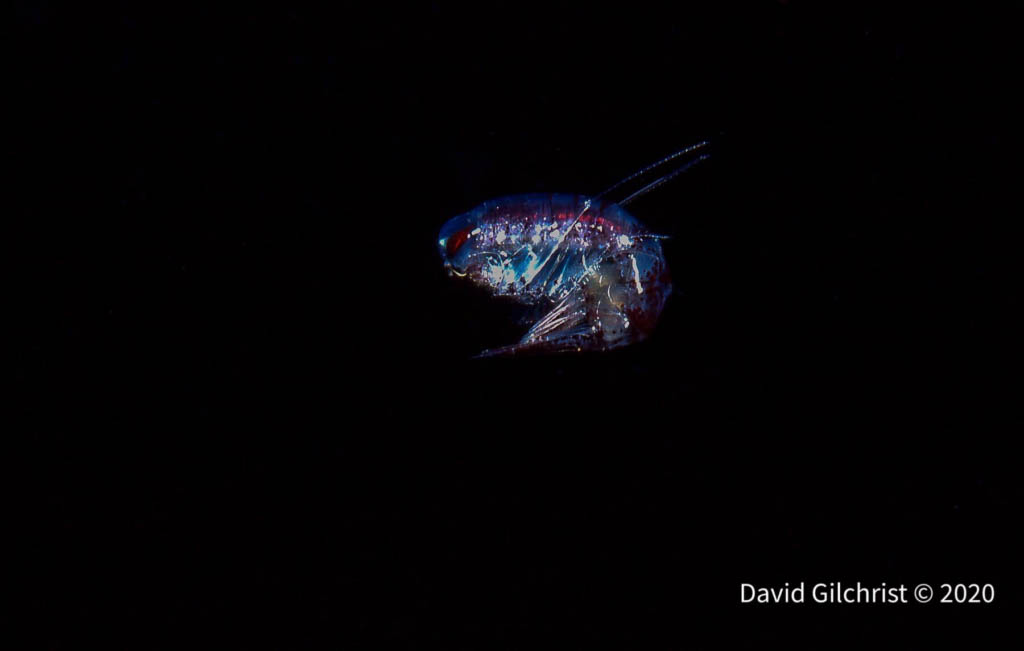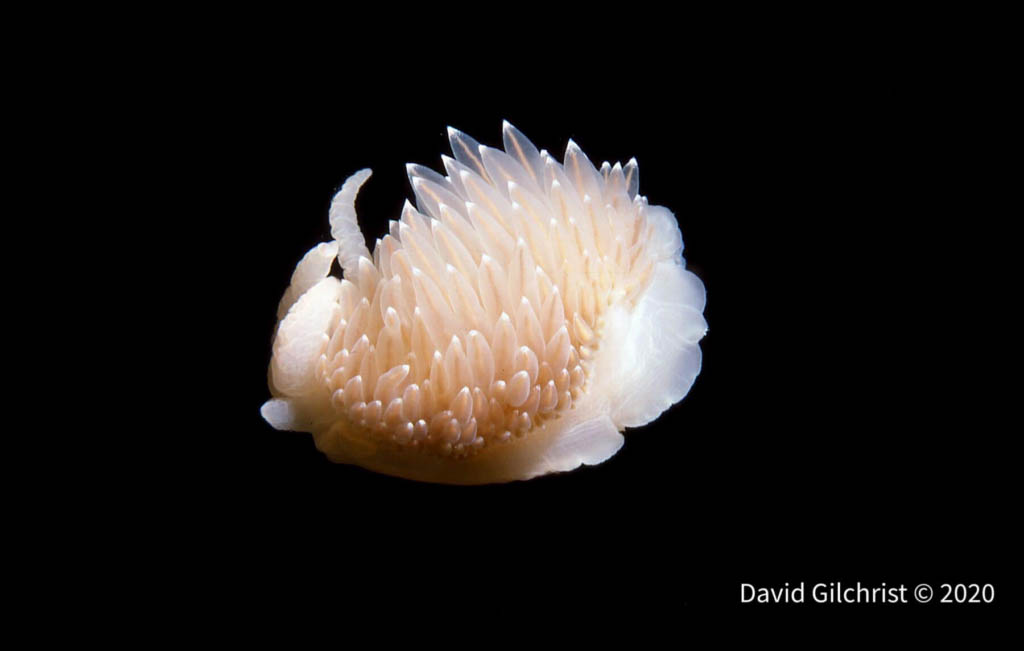As a diver for close to 3 decades, I have developed a fascination for the diverse nature of Canada’s Marine environments. During that time, I have had the opportunity to dive in a variety of these environments from the Queen Charlotte Islands, to the waters off Nova Scotia at Cape Breton and Lunenburg. One of my most fascinating underwater adventures, however, was the opportunity to photograph the diverse aquatic life of an arctic kelp bed at Resolute Bay in the North West Territories.
In the late 1980’s , my diving partner Jim Lockard and I visited Resolute with Dr. Mike Dickman who, at that time, was conducting research on freshwater meromictic lakes. During that first trip, Jim and I took the opportunity to dive several times in the waters of Resolute Bay. On those dives, we were quite astounded at the variety and beauty of the underwater life in these seemingly hostile, frigid waters. Our use of underwater still camera systems proved fruitful and we were able to return with some interesting images.
Two years later, with the assistance of Energy, Mines & Resources, Canada and the Exploration program of the Canada Council, I received support through the Arctic Awareness Program. This program allowed artists, writers , photographers and film makers the opportunity to use the facilities of the Polar Continental Shelf Project as they worked on a wide variety of projects. My project was to conduct underwater photography in Resolute Bay . While at Resolute, I also was fortunate to receive much advice and support from Dr. Harold ‘Buster’ Welch and Bruce Townshend of Fisheries and Oceans Canada. Jim Lockard, Ed Butski both from St. Catharines Ontario and John Veber of Brantford, Ontario accompanied me on the trip to act as support divers for the project.
It proved to be quite fascinating. As a photographer, I was particularly amazed at the colouration and size of some of the invertebrates that we saw during our dives. Richly coloured anemones and vibrant soft corals proved to be very beautiful subjects. During one series of dives, I was able to use a variety of close-up equipment fitted to the Nikonis cameras to capture the ‘planktonic’ invertebrates. Although, at times, difficult to capture on film these creatures, when spotted, became a highlight of our dives. Often drifting with the tidal flow, they provided a never-ending variety of photographic possibilities. The images taken, when viewed back at home, proved to be quite interesting. Many of the creatures, I felt, resembled alien life-forms, but they have inhabited our arctic seas for millenia.
I was also intrigued by the natural formations seen on the ice that grounded in the bay. Above water the shapes proved to be interesting, but below the surface these natural sculptures were often quite intricate and very delicate. During the 24 hours of daylight, the upper portion of the ice was exposed to a lot of sun. As it melted, the ice often took on a diverse variety of shapes. When re-immersed during high tide, we could swim around to inspect these natural creations. They were often quite incredible.
From the large collection of slide images taken during the two trips, a selection was made into a set of Cibachrome prints. This set of prints has been displayed at several locations in the intervening years. It continues to provide viewers with an interesting glimpse of the variety of life beneath Arctic Waters.
Article/Photo Contribution: David Gilchrist
Follow David’s Dive Adventures on Facebook and Instagram.










